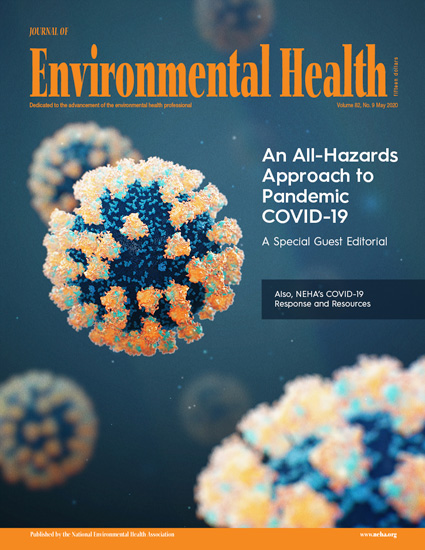Exploring the link between particulate matter pollution and acute respiratory infection risk in children using generalized estimating equations analysis: a robust statistical approach
IF 5.3
2区 环境科学与生态学
Q1 ENVIRONMENTAL SCIENCES
引用次数: 0
Abstract
India is facing a burdensome public health challenge due to air pollution, with a particularly high burden of acute respiratory infections (ARI) among children. To address this issue, our study aims to evaluate the association between exposure to fine particulate matter (PM2.5) and ARI incidence in young children in India. Our study used PM2.5 data provided by the Atmospheric Composition Analysis Group at Washington University to assess the association between PM2.5 exposure and ARI incidence in 223,375 children sampled from the 2019–2021 Demographic Health Survey in India. We employed the generalized estimating equation and reported odds ratios and 95% confidence intervals for a 10 µg/m3 increase in PM2.5 and quartiles of PM2.5 exposure. Each 10 µg/m3 increase in PM2.5 levels was associated with an increased odds of ARI (OR: 1.23, 95% CI: 1.19–1.27). A change from the first quartile of PM2.5 (2.5–34.4 µg/m3) to the second quartile (34.5–51.5 µg/m3) of PM2.5 was associated with a two-fold change (OR: 2.06, 95% CI: 1.60–2.66) in the odds of developing ARI. Similarly, comparing the first quartile to the fourth quartile of PM2.5 exposure (78.3–128.9 µg/m3) resulted in an over four-fold increase in the odds of ARI (OR: 4.45, 95% CI: 3.37–5.87). Mitigation efforts must be continued implementing higher restrictions in India and to bring new interventions to ensure safe levels of air for reducing the burden of disease and mortality associated with air pollution in India.利用广义估计方程分析探索颗粒物污染与儿童急性呼吸道感染风险之间的联系:一种稳健的统计方法
由于空气污染,印度正面临着沉重的公共卫生挑战,其中儿童急性呼吸道感染(ARI)的负担尤为沉重。为了解决这一问题,我们的研究旨在评估细颗粒物(PM2.5)暴露与印度幼儿急性呼吸道感染发病率之间的关系。我们的研究利用华盛顿大学大气成分分析小组提供的 PM2.5 数据,评估了从 2019-2021 年印度人口健康调查中抽取的 223375 名儿童中 PM2.5 暴露与急性呼吸道感染发病率之间的关联。我们采用了广义估计方程,并报告了 PM2.5 每增加 10 µg/m3 和 PM2.5 暴露四分位数的几率比和 95% 的置信区间。PM2.5水平每增加10微克/立方米,患ARI的几率就会增加(OR:1.23,95% CI:1.19-1.27)。从 PM2.5 的第一四分位数(2.5-34.4 微克/立方米)到第二四分位数(34.5-51.5 微克/立方米),患急性呼吸道感染的几率变化了两倍(OR:2.06,95% CI:1.60-2.66)。同样,将 PM2.5 暴露的第一四分位数与第四四分位数(78.3-128.9 µg/m3)相比较,ARI 的几率增加了四倍多(OR:4.45,95% CI:3.37-5.87)。必须继续努力在印度实施更严格的限制措施,并采取新的干预措施,确保空气的安全水平,以减轻印度与空气污染相关的疾病负担和死亡率。
本文章由计算机程序翻译,如有差异,请以英文原文为准。
求助全文
约1分钟内获得全文
求助全文
来源期刊

Environmental Health
环境科学-公共卫生、环境卫生与职业卫生
CiteScore
10.10
自引率
1.70%
发文量
115
审稿时长
3.0 months
期刊介绍:
Environmental Health publishes manuscripts on all aspects of environmental and occupational medicine and related studies in toxicology and epidemiology.
Environmental Health is aimed at scientists and practitioners in all areas of environmental science where human health and well-being are involved, either directly or indirectly. Environmental Health is a public health journal serving the public health community and scientists working on matters of public health interest and importance pertaining to the environment.
 求助内容:
求助内容: 应助结果提醒方式:
应助结果提醒方式:


